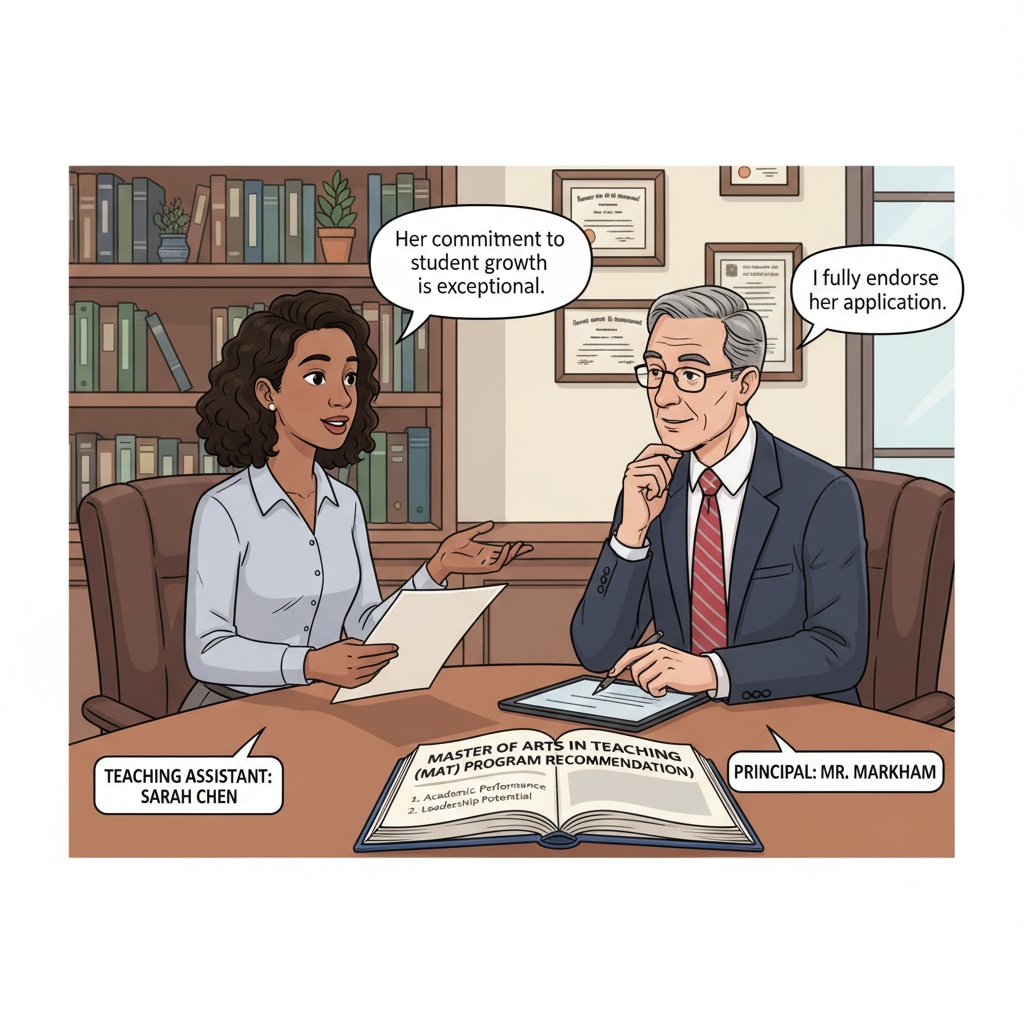In the realm of K12 education, teaching assistants often aspire to further their careers by applying to MAT (Master of Arts in Teaching) programs. A crucial element in this application process is the recommendation letter. The right recommendation can significantly enhance a teaching assistant’s chances of being accepted into a prestigious MAT program. Let’s delve into the details of finding the perfect recommender and crafting a compelling letter.

The Importance of a Strong Recommendation
A well-written recommendation letter serves as a powerful endorsement of a teaching assistant’s skills, dedication, and potential. Admissions committees rely on these letters to gain insights into an applicant’s suitability for the MAT program. For example, a letter highlighting a teaching assistant’s ability to engage students, manage a classroom, and collaborate with teachers can make a positive impression. According to Teach.org, a strong recommendation can set an applicant apart from the competition.
Characteristics of an Ideal Recommender
When seeking a recommender for the MAT program application, certain qualities are highly desirable. Firstly, the recommender should have direct knowledge of the teaching assistant’s work. This could be a principal, a lead teacher, or a supervisor who has observed the applicant in action. Secondly, they should be able to speak to the applicant’s strengths in areas relevant to teaching, such as communication skills, subject matter expertise, and adaptability. Additionally, a recommender with a good reputation in the education field can add credibility to the letter. As the National Education Association suggests, choosing the right recommender is essential.

Building a professional relationship with a potential recommender is crucial. Start by establishing regular communication and demonstrating your commitment to the job. Offer to take on additional responsibilities or participate in professional development activities. This not only showcases your dedication but also gives the recommender more to write about in the letter. For instance, if you volunteer to lead a small group activity or assist with curriculum development, your efforts will be noticed and can be highlighted in the recommendation.
In conclusion, for teaching assistants looking to pursue an MAT program, the recommendation letter is a vital component. By carefully selecting an ideal recommender and building a strong professional relationship, applicants can increase their odds of success. Remember, a well-crafted recommendation can open the doors to a rewarding career in teaching.
Readability guidance: The content uses short paragraphs and lists to summarize key points. Each H2 section provides relevant information in a clear manner. The passive voice and long sentences are kept to a minimum, and transition words are used throughout to enhance flow.


